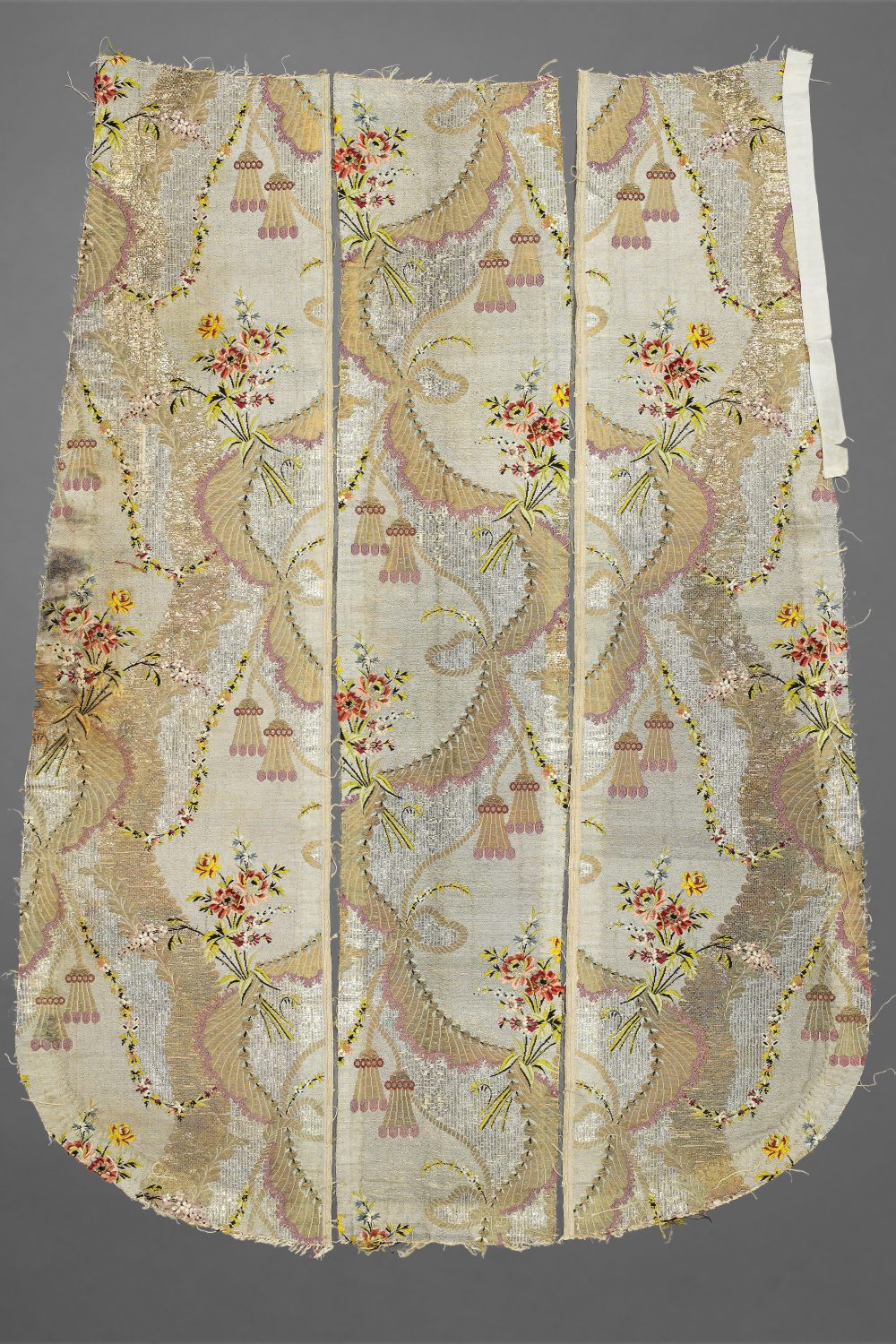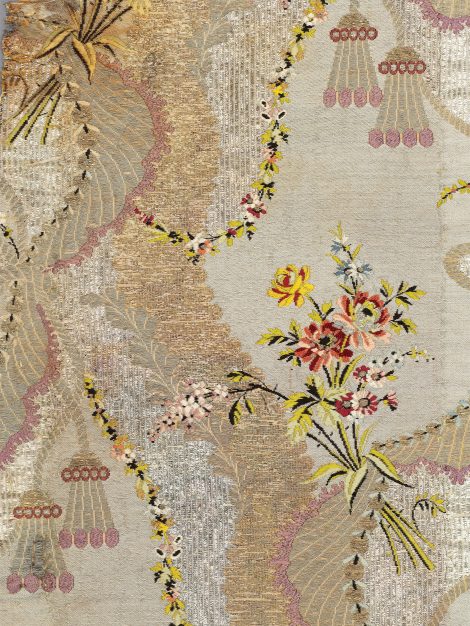The distinctive shape of these three panels placed together suggests that they were once part of a chasuble, an ecclesiastical garment or vestment worn by a priest when celebrating mass. Originally conical in form and made from a richly patterned or embroidered silk they evolved into a more practical double sided shield shape. This example is likely to have been used by the Catholic church on the Continent; ornate vestments were not worn in the Anglican church until a revival of high church ritual led to their adoption in some churches from the mid 19th Century. Silks were not woven specifically for ecclesiastical use until later in the 18th Century, the same designs deemed appropriate for both religious and secular garments, and were ordered directly by the church or donated by parishioners. Probably French, these silk panels are very ostentatious examples, particularly in their use of a significant amount of different types of metallic threads that would catch the light in a spectacular manner and indicate that a considerable sum of money had been spent in their acquisition. Pale coloured, appropriate to the ecclesiastical calendar, the design looks rigid and heavy despite the dominant arcs of the swags, and the small sprays of flowers lack any sense of naturalism. The cord, tied into bows from which hang pairs of tassels, is reminiscent of ceremonial garments and furnishings, and also appears in a similar silk design now in the Musée des Tissus in Lyon (MHT 49491.6).

